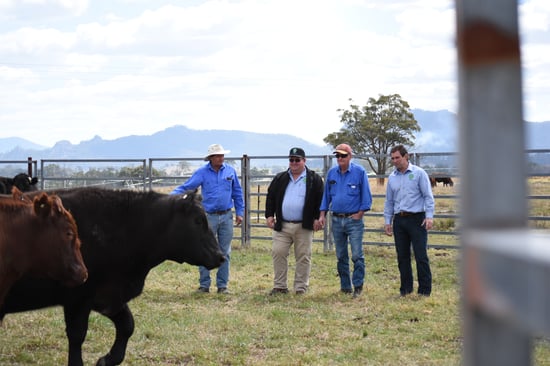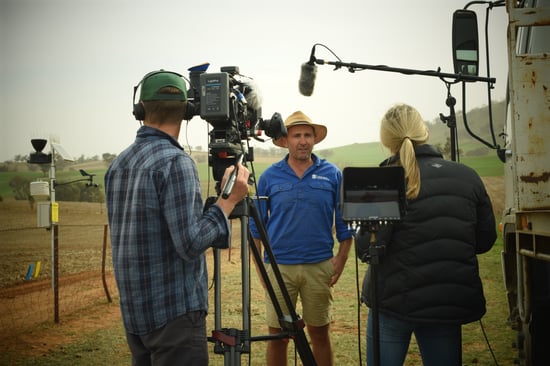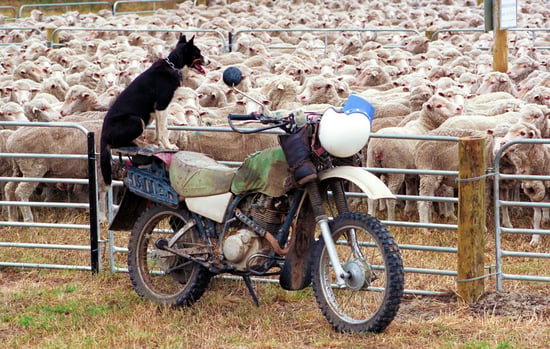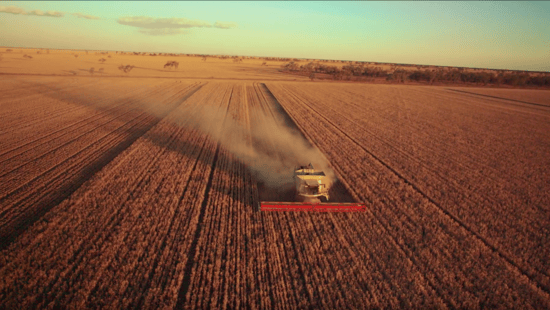Having a marketing strategy is fundamental for any business, as connecting with your audience doesn’t just happen by chance. But in agribusiness, marketing strategies take on a flavour that’s very different from other goods and services.
The Australian agriculture sector is non-stop but seasonal, it’s brains and brawn, and it’s an industry where things need to be tried & tested but also push the boundaries of efficiency and yield. And most importantly – it’s not a language you can learn overnight – it’s an industry of a thousand dialects.
So in preparing communication campaigns, writing marketing copy and in presenting those ideas visually for agribusiness, it’s so very easy to get it wrong.
For over 21 years, our Anvil team has lived and breathed Australian agriculture and many in our team have grown up in regional Australia - combining ag knowledge with strategic communication and media production skills. So while every video and business is different, we’re going to share our fundamentals of video strategy that every agricultural business needs to know.
1. Don’t just identify your audience – think like them

While defining your audience is one of the most basic steps it’s often used to list statistics and demographics, rather than the behaviours and choices you really need to understand.
It’s certainly important to understand how old your audience is and where they live, but how does that influence the way they interact with your business? For example, how much research they might do about your company? What are the important trust factors to them that they need to know to even listen to what you want to tell them?
A simple way to flesh out these behaviours is to create key personas. Imagine someone you know who fits your audience. What do they value and what do they distrust? Who are they trying to impress? What makes their lives or work easier or harder? How much time do they have and what do they spend it on? Once you answer these (and other) questions, you’ll have a description of someone that sounds like you’ve known them for years.
In agriculture, this is often the most overlooked step in creating marketing content – often because agencies with little understanding of the ag sector don’t have an inkling that the audience is any different from those they’re accustomed to.
So, instead of jumping straight to what you or your product does – you need to refocus on your audience.
More particularly, you need to be sure that any creative agency you’re working with - your social media marketers, video production company, advertising agency - really understands your audience and is dedicated to always learning more about the real people they are marketing to.
Only once there’s a true understanding of your audience - and a healthy dose of obsession about always trying to understand them more - can you really start to think about what you want to say to them and focus on the messaging of your video strategy
2. Know what you want to achieve
Having a clear purpose for your video strategy is vital – but it’s not always easy. The most common mistake is to try and cram too many priorities into a single video or communication. A key question that we ask all our clients is “if the audience was to only remember one thing from this video – what would it be?”.
And we really do mean one thing. Message overkill can quickly turn off your audience, weaken your brand, and fail to bring about any action by the audience (or worse – drive your audience to actively avoid you).
However, we know in agriculture (especially in relation to R&D comms and training), there will be times when multiple messages and data must be conveyed. That’s why story-telling and linking to personal experiences is a powerful tool.
Cognitive psychologist Jerome Bruner suggests we are 22 times more likely to remember a fact when it has been wrapped in a story.
This doesn’t mean making every piece of communication into a feature film – what it means is making your video relatable and give your audience someone or something to connect to. This can be achieved using real-world examples, situations and people.
Whether you achieve that through film or animation? Well, now we are getting down to the nitty gritty of video production – and that means taking a good hard look at what your constraints are going to be.
3. Be honest about what’s NOT going work
This is the opposite of “blue-sky thinking” that most agencies will want to do when it comes to your marketing strategy. That’s where we are different – we’re not an “agency”. We specialize in video and audio content for you. And while blue-skies are great to look up to, there are some realities on the ground that we need to address first.
These realities can often be summed up by the Iron Triangle hat you may not know by name – but we bet you’ve been on the receiving end of one of its pinch points.
While it’s been around for over 70 years, the iron triangle has remained (relatively) unchanged – if you expand or reduce the time, scope or cost of something it will impact the balance of the others.
Take for example something that is cheap and quick – it’s not going to be as good a quality or it won’t have as many features. What you’re aiming for is a balance of all elements.
So do you have a tight deadline to turn this video around? Do you have a limited or staged budget? How complex is the message or action you need the audience to take? The answers to these questions set a realistic benchmark of available options, and impact what type of video will be most effective for your messaging, and your audience.
4. Understand what types of videos your audience needs, and when

Different types of videos, just like different tools, are best used for certain circumstances. And while there can be many videos that fit your purpose it’s important to understand the tools in the shed before you start using them
Here are types of videos for agricultural businesses, and when they work best.
5. The trust factor

In any business, trust is the cornerstone of building a sustainable future. But for agricultural businesses, it’s particularly hard to gain and easy to lose. The 2021 Roy Morgan Agribusiness Industry Risk survey found that trust promotes customer advocacy and referrals, drives revenue growth and on top of that, increases market capitalisation.
At the other end of the spectrum, distrust and disappointment are some of the most significant, yet least recognised risks. It kills audience engagement, serving as the tipping point for reputational damage and directly impacts commercial and economic outcomes. So it’s vital to ensure that your video content hits the mark, and is a constantly evolving strategy to prove your worth to your audience (both staff and customers).
If you’re ready to start creating great agriculture video content or want to talk to an expert about strategic communications options, get in touch with us.



.png)